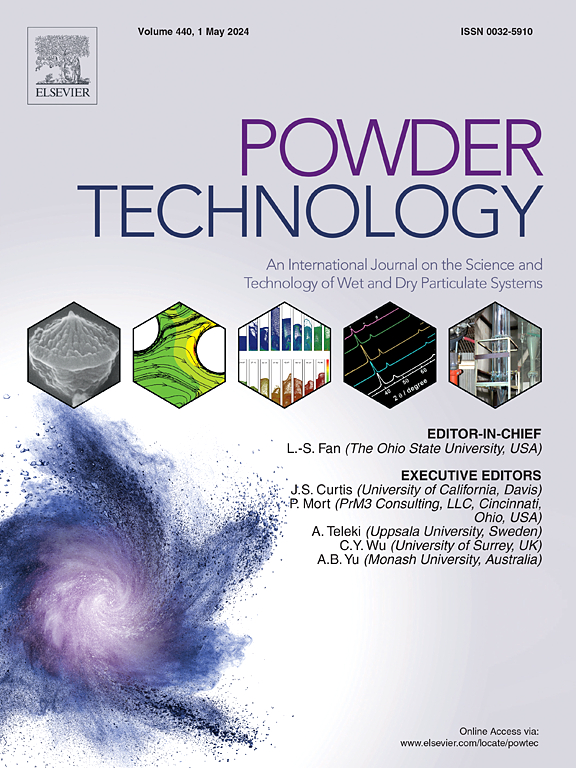Toward refinement and homogenization of heterogeneous metal nanoparticle prepared by electrical explosion with spatial filter
IF 4.5
2区 工程技术
Q2 ENGINEERING, CHEMICAL
引用次数: 0
Abstract
The ability to synthesize nanoparticles (NPs) with desirable structural/compositional properties has been the driving goal of functional material applications. As a “one-step” evaporation-condensation method for NPs production, the electrical explosion can achieve ultrafast heating/quenching rates (dT/dt ∼ 1010 K/s) of current-carrying metals. This study proposes a spatial filter to control explosion energy release and product quenching procedure. A supersonic plasma jet (>2 Mach) erupts through the small hole of the filter, forming a high-pressure homogenizer structure, enhancing the diffusion and cooling down of explosion products. Microscopic characterization indicates NPs size decreases from 46.3±16.7 to 27.7±7.7 nm. Structural study has yielded two assembly routes of NPs: the first involves the top-down approach (Cu particles >100 nm), while the second concerns the bottom-up way (Cu and CuxO NPs <100 nm). The improved performance is attributed to the multi-stage control of explosion products, resulting in less instability development and a more reasonable evaporation-condensation process.

求助全文
约1分钟内获得全文
求助全文
来源期刊

Powder Technology
工程技术-工程:化工
CiteScore
9.90
自引率
15.40%
发文量
1047
审稿时长
46 days
期刊介绍:
Powder Technology is an International Journal on the Science and Technology of Wet and Dry Particulate Systems. Powder Technology publishes papers on all aspects of the formation of particles and their characterisation and on the study of systems containing particulate solids. No limitation is imposed on the size of the particles, which may range from nanometre scale, as in pigments or aerosols, to that of mined or quarried materials. The following list of topics is not intended to be comprehensive, but rather to indicate typical subjects which fall within the scope of the journal's interests:
Formation and synthesis of particles by precipitation and other methods.
Modification of particles by agglomeration, coating, comminution and attrition.
Characterisation of the size, shape, surface area, pore structure and strength of particles and agglomerates (including the origins and effects of inter particle forces).
Packing, failure, flow and permeability of assemblies of particles.
Particle-particle interactions and suspension rheology.
Handling and processing operations such as slurry flow, fluidization, pneumatic conveying.
Interactions between particles and their environment, including delivery of particulate products to the body.
Applications of particle technology in production of pharmaceuticals, chemicals, foods, pigments, structural, and functional materials and in environmental and energy related matters.
For materials-oriented contributions we are looking for articles revealing the effect of particle/powder characteristics (size, morphology and composition, in that order) on material performance or functionality and, ideally, comparison to any industrial standard.
 求助内容:
求助内容: 应助结果提醒方式:
应助结果提醒方式:


